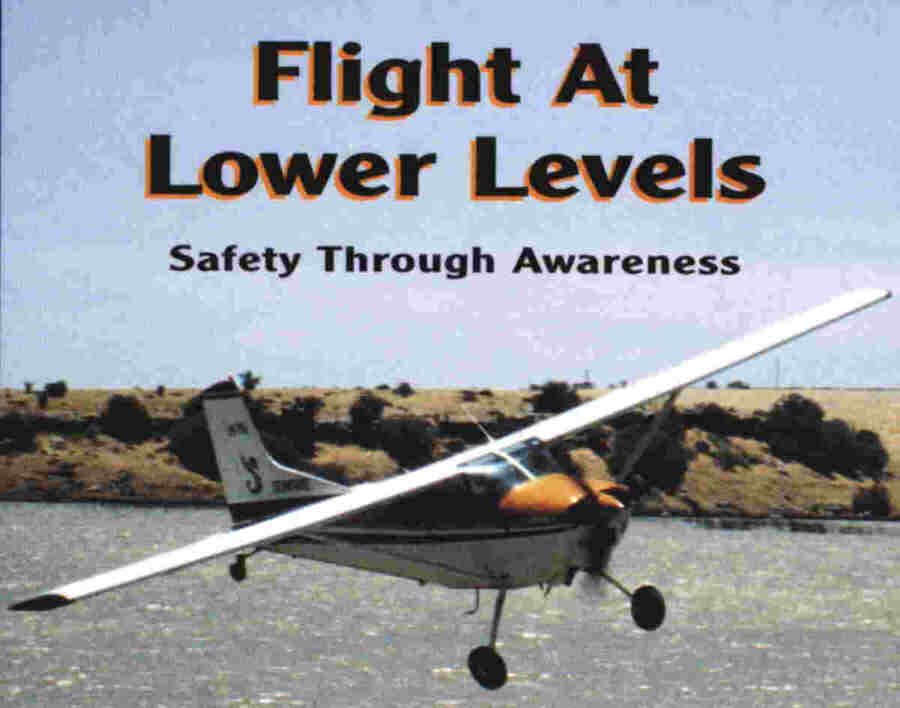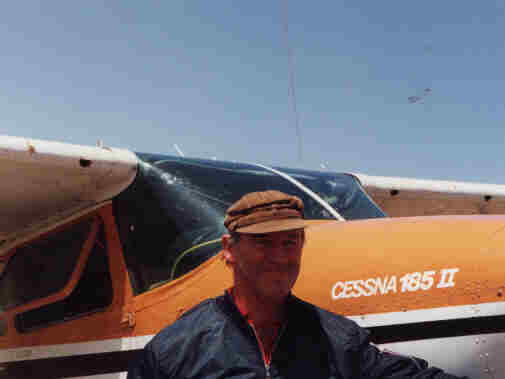
FLIGHT AT LOWER LEVELS is the first book to address the problems of aircraft flight at levels close to the ground.John Freeman, who has spent most of his career in low level flight writes for the general aviation pilots reminding them that most accidents are caused by collision with the ground or objects on the ground.His book promotes safety through awareness of the pitfalls of flight at Lower Levels.
This book has been a long time coming and gives a qualified insight into the hazards which pilots must be aware of during proximity to the ground.
- Chris Sperou - Australian Aerobatics Champion.

John Freeman was born in Rugby,Warwickshire, England and emigrated to Australia with his parents at the age of 14.He joined the Air Cadets and commenced to learn to fly in 1951.Ever since graduating as a pilot he has been involved with agricultural aviation as a Pilot,Operator and Specialist Examiner for the Civil Aviation Authority.
He has engaged in agricultural aviation flying a variety of aircraft from De Havilland Tiger Moths to the latest Turbine Aircraft and in a variety of locations from England, Scotland, The Sudan, China and throughout Australia.
He established a LOW LEVEL FLYING COURSE for General Aviation pilots in 1990 and has had over 200 pilots passing through his course since that time.
John Freeman lives in Adelaide South Australia
I wish to thank the following;-
My friend David Hughes-Jones for planting the seed of an idea from which the book derived its genesis.
The Australian Aviation Underwriting Pool for encouragement and support in Publishing.
The Civil Aviation Authority, Australia for the use of material contained in the Agricultural Pilots Manual
I was pleased when John Freeman asked me to write the preface to this book on flight at lower levels, as I believe that it is an area that requires informed comment. The true mark of a professional pilot is his ability to continue to learn as he gains experience.
As a pilot, you are responsible to yourself and those that fly with you, to other aviators and their passengers, and to people on the ground, to fly wisely and safely.
This book has been long in coming and gives a qualified insight into the hazards you must be aware of during low level flight.
As a low level acrobatic pilot, I also need to consider the safety aspects of low level flight particularly when operating away from an aerodrome, and make allowances for obstructions and terrain hazards, as well as the effects of weather conditions in that immediate area.
Safety is of paramount importance at this level and John Freeman, who has spent most of his career operating in the very demanding area of low level flight, has admirably passed on his wisdom in this publication.
Chris Sperou, Australian Aerobatics Champion
This book is designed to make the pilot aware of the hazards, problems and factors affecting flight at lower levels. It is not designed to teach the pilot to low fly but to make him or her safer when it is necessary to fly at lower levels due to approved operational need or when forced to by poor weather conditions.
Low flight occurs whenever the aircraft descends below 1000 ft AGL. In Australia it becomes illegal over open areas below 500 ft AGI, unless caused by poor weather or in an operation when flight below 500 ft. AGL has been previously approved, or in the take-off or landing phase.
Low flying is hazardous and must always be approached with great care. With proper training, as in any other phase of flight, it may be carried out with comparative safety.
It must never be forgotten that obstructions exist at low level, as do factors which may cause the aircraft to strike the obstruction. The greatest, most dangerous, obstruction is the one beneath your feet. It must only be contacted in the landing configuration. The object of this book is to ensure that always remains the case.
Over the forty years plus that I have been engaged in low flying operations, including twenty years of continuous low flying training and time as a low level specialist with the Civil Aviation Authority, I have increasingly realised how dangerous low level work can be unless accompanied by good training that promotes capability and awareness. With this, flying at lower levels can be carried out with no more risk than any other area of aviation that demands extra skills and training - instrument approaches to minima for instance. However we must never lose sight of the hazard or take it lightly.
John Freeman,Adelaide, South Australia, 1995
The following subjects are discussed in Part 1;-
Flight at or below 500 ft. AGL
General
Aircraft Inertia
Turning at Low Level
Stalling at Low Level
Engine Failure at Low Level
The following subjects are discussed in Part 2;-
Low Flying near Power Transmission Lines
Assessing & Locating Power Line Runs
General
The following subjects are discussed in Part 3;-
Low Flying in Hilly Terrain
Flight into Valleys & Across Ridges
Effect of Wind
The following subjects are discussed in Part 4;-
Low Level Circuits
Circuit Flying
Taking Off & Landing
Engine Failure on Takeoff or Landing
Inspection of Landing Area
The following subjects are discussed in Part 5;-
Low Level Navigation
Low Level Map Reading
Deterioration in Weather Conditions
General
Photographs of Typical Power Line Situations
FINAL NOTES
The Book comes equipped with no less than 18 photographs of different Power Lines of the sort most Low Flying Aviators will encounter,also no less than 10 illustrated drawings to make clear to the Reader how and why dangerous situations arise and how best to avoid them.
This book FLIGHT AT LOWER LEVELS has already found great acceptance among aviators and over 3000 copies have been purchased since publication in Australia. You can obtain your own copy by contacting John Freeman by phone,fax,letter or by E-MAIL .The book itself sells for $22.00 plus cost of postage & packaging which varies depending on your own location/address.
If ordering within Australia add $4.00 for postage & packing:Elsewhere add $8.00 for postage & packaging .
Please include your Credit Card Number and its Expiry Date with your Order.
John Freeman can be contacted at 20 Torrens Street, Gilberton South Australia 5081 or phoned / faxed at (618 -08) - 8344-3944
FURTHER PUBLICATIONS
Since I wrote and published "Flight at Lower Levels" I have been compiling two further books,the first (which is nearly completed) is titled"Flight at Lower Levels -Safety in the Circuit".This covers aspects of safety during the two most hazardous periods in any flight - LANDING & TAKING-OFF.This title should be available soon.
The second book has not been given a title as yet and will cover an account of my adventures and experiences in the U.K., Egypt,The Sudan,as well as in Australia since I became a pilot.
Although no title has been given,and it is not yet ready I am hopeful to complete this in the near future.If my endeavours are rewarded it will result in an interesting, amusing and informative coverage of the Agricultural Aviation Industry in those areas during the past 50 years and my small part in it.- John Freeman (Dec 2000)